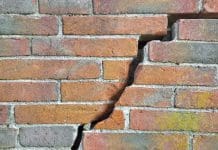New research from the world’s leading science centre, BRE, identifies particular indicators regarding buildings and urban environments and how these have made an impact on our health
The research has demonstrated that indicators and associated materials can inform city government practitioners, and frame discussions about urban health challenges and potential policy solutions.
The project has taken up to five years to complete and has captured 58 evidence-informed indicators across 10 categories within urban environments, such as air quality, housing and buildings, noise pollution, safety and security, and transport in 20 global cities.
The study looked at London, Los Angeles and Dubai, with pilot projects undertaken in the London Borough of Southwark as well as in the UAE capital.
Simon Bevan, Director of Planning for Southwark Council, said: “As a public authority making decisions about urban planning in a challenging political environment, we want to show that we are basing decisions on evidence and being transparent about the decision-making process.
“Choosing indicators and regularly monitoring performance against them should, therefore, be central to all that we do.”
Air pollution remains a major problem in the UK despite a reduction in emissions since 1990.
In February 2017, the UK was issued a warning from the European Commission for failing to address repeated breaches of air pollution limits for nitrogen dioxide (NO2) in 16 cities including London, Glasgow and Leeds.
Each year in the UK, around 40,000 deaths are attributable to exposure to outdoor air pollution.
Although measurable research into the impact of air pollution from urban environments is helpful to highlight the issue, it does not provide evidence to support solutions nor does it show which sectors are best-placed to act.
BRE‘s motivation to find a solution triggered the research project, which discovered that a solution to improving urban health did not sit with the health sector alone, but requires a lot of help from built environment professionals who have a significant role to play to drive change forward.
In London, the stakeholders found the BRE Causal Pathways Framework provided a simple overview of complex urban health issues to kick-start discussions about policy interventions and monitoring mechanisms.
Project lead and Associate Director of Cities at BRE, Helen Pineo said: “The BRE HCI and Causal Pathways Framework help explain the link between urban and built environment exposures and health outcomes.
“Cities can use the framework to trace the impact of policy and design decisions to wellbeing outcomes.
“The Causal Pathways Framework, for example, has the capability to drill down into specific challenges such as air quality, and examine the interconnected elements of the built environment that contribute to air pollution which require action from multiple public and private sector stakeholders.”
Findings from the Causal Pathways Framework findings have the potential to be be applied to the development of new large-scale developments or urban planning policies.

















